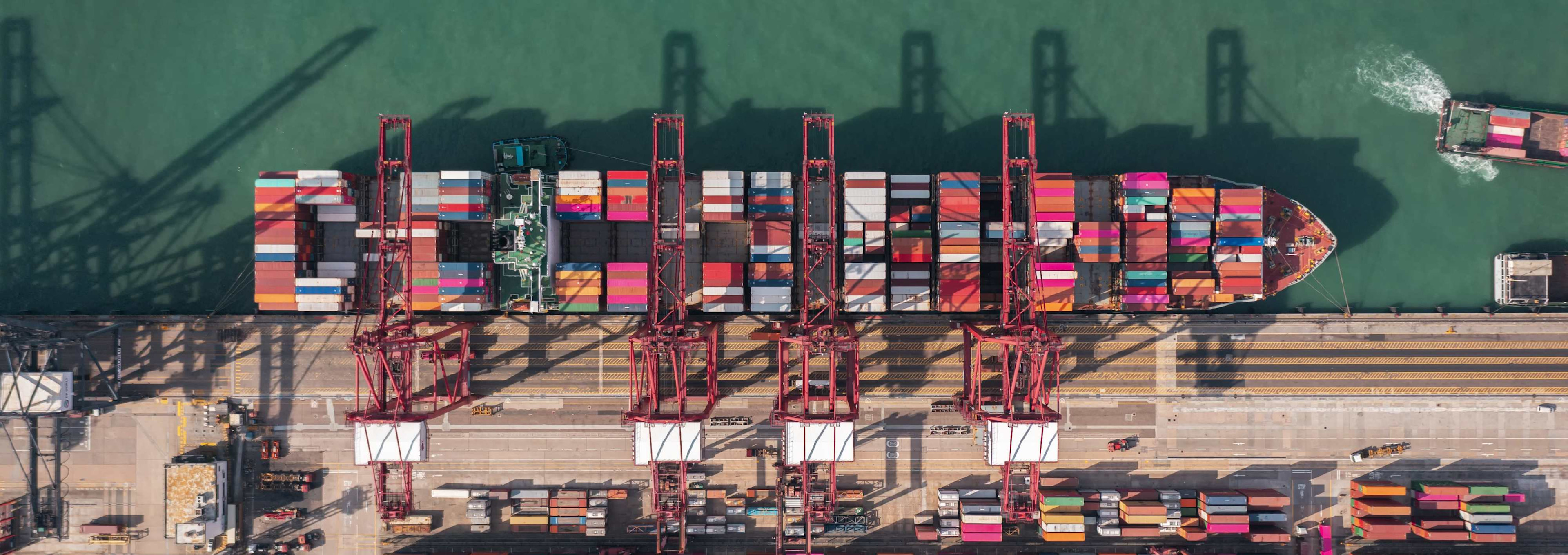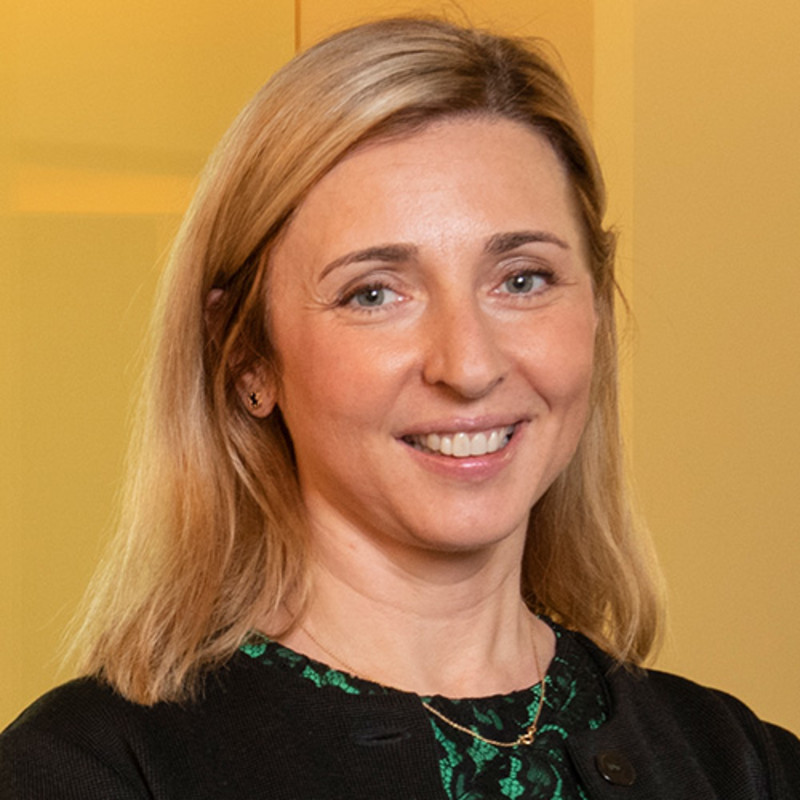

Circular solutions – a triple threat for supply chain challenges
The certainty of climate change combined with the uncertainty of geopolitics means risks to supply chains are greater than ever. Circular solutions can help companies increase resource security, reduce supply chain complexity and create sustainable long-term value.
まとめ
- Supply chains are increasingly concentrated offshore
- Recent crises have revealed supply chain vulnerability
- Circular solutions help reduce supply chain risks and increase resource security
The impact of supply chain disruptions has been inescapable for businesses, consumers, and economies. Covid contagion continues to roil regions globally, triggering lockdowns that shutter factories, jam ports, paralyze trucking fleets, and reduce the flows of goods internationally.
Supply shortages underscore just how fragile and vulnerable manufacturing supply chains have become. They have grown so long, complex and fragmented that many downstream customers have no real read on the root causes of bottlenecks and breakdowns. It is typical for inputs to be mined, processed and assembled upstream across multiple manufacturing players in multiple geographies before final shipment to downstream customers. For example, a solar PV cell starts with mining quartz-sand in China. From there it is melted and cast into ingot blocks, sliced into wafers, and finally assembled onto solar panels by workers in factories spread across Malaysia, Cambodia, Vietnam and Thailand.
Over the last two decades, China’s manufacturing might has increased considerably. It is now the world’s largest exporter, representing 12% of a global merchandise trade market valued at USD 28.5 trillion in 2021.1,2 Though global consumers benefit from more goods at lower prices, it also means the world’s manufacturing activity is increasingly concentrated in and dangerously dependent on Chinese suppliers.
Moreover, the availability of cheaper inputs has made it easier for manufacturing to follow a linear production path that begins with the extraction of virgin resources, ends with their disposal by the end-user. Not only is value embedded in the product lost, but new production pathways are initiated, requiring more raw materials, processing, and logistics. A new cycle of environmental and supply chain risks begins again.
Breaking the chain
In contrast to linear production, circular business models loop production cycles. Products are not discarded but rather reintegrated into product supply chains. As a result, production and sales are less dependent on procuring offshore quantities and more focused on innovation for onshore quality. That means designing products that are not only built to last but also exhibit a competitive edge.
With circular models, production and sales are less dependent on procuring offshore quantities and more focused on innovation for onshore quality
Circular solutions come in many shapes and sizes that can be adapted based on each industry’s features and flows. Equipment refurbishing allows manufacturers to fix up and re-sell high-end equipment to customers in lower market segments. Products as a service (PaaS) models lease physical products so that customers can rent-a-service rather than own-a-product. Manufacturing and repair organizations (MROs) provide customers with vast inventories of small parts so customers can repair rather than replace costly machinery.
At the heart of each of these solutions is the circular principle of keeping products in use longer so their value can be used to generate satisfaction from customers and revenues for companies. Moreover, keeping products in service longer has the added benefit of de-materializing and de-risking manufacturing supply chains.
Keeping products in service longer has the added benefit of de-materializing and de-risking manufacturing supply chains
Out with the new, in with the old
Though it borders on the basic, some of the world’s most sophisticated industries are using refurbishment in manufacturing. Semiconducting equipment manufacturers (SEMs) routinely disassemble, repair and refurbish machines from high-end customers for use in less sophisticated market segments. This enables them to supply bleeding-edge technologies (think metaverse and cloud systems) while still providing capacity to lower-end customers (passenger cars and electric appliances). One leading SEM boasts that even after three decades, 90% of its machines are still used in semiconductor fabrication plants (fabs) around the world.3 For SEMs, circular production provides additional revenue streams with minimal need for the raw materials, processing, assembly and transport logistics typical of manufacturing phases.
Figure 1 | Reducing the length, strengthening the chain

Refurbishment, PaaS leasing, and MROs help reduce manufacturer’s dependence on offshore suppliers. As a result, upstream inputs are reduced, supply chains are simplified and disruptions minimized.
Source: Robeco
A similar method is increasingly being employed by manufacturers of less sophisticated but nevertheless technologically advanced products in healthcare and life science research. From MRI scanners for diagnostic testing to mass spectrometers for drug discovery, refurbished machines provide an easy way for hospitals and science labs to combat rising costs without compromising outcomes. The global market for used medical devices is anticipated to reach USD 10.5 billion by 2027 (CAGR of 10.3%).4 Moreover, in some industries, margins for circular product lines exceed those of new ones and we are seeing commitments to increase revenues from circular products from major business-to-business players.5
Capitalizing on the intangible
Embedded sensors and cloud technologies mean manufacturers using PaaS models can stay digitally connected with their physical products, capturing data and enabling customized services like never before. In this way, profits are generated not from producing higher volumes of tangible products but by enhancing the quality and value of those already in circulation. From the mundane (light bulbs, carpets, and tires) to the complex (jet engines, electric grids and wind turbines), companies are embracing the PaaS model, creating diverse opportunities across retail, commercial and industrial suppliers.
Industrial supermarkets
Maintenance and repair organizations (MROs) are like one-stop supermarkets for industrial manufacturers, providing massive inventories spanning millions of parts and technical know-how via dense networks of engineers and technicians. If a machine or part breaks, manufacturers can trust their MRO to fix it instead of ordering it anew from a supplier based in a distant location. Moreover, near and onshore presence means procurement and manufacturing and logistic risks from offshore suppliers can also be reduced, if not eliminated entirely. From utilities and power distribution to robotics and industrial automation, building materials and construction to chemicals and packaging, specialized MROs are providing diverse investment opportunities across sectors.
As the examples above demonstrate, circular solutions are best suited for industries with high-margin products that have significant IP and R&D costs. Most interesting for us are the investment opportunities at the business-to-business level. Due to their fast-moving, low-margin nature, food and fashion are currently not in scope. That may change along with shifting consumer preferences. Younger generations are demanding more flexible purchase options, superior service features and sustainable processes that are free of carbon emissions or human rights abuses. Circular supply chains equipped with digital intelligence could help companies stay in front of these building forces. As a result, we could begin to see innovative products emerge even in the retail space.
Circular economy models are turning out to be not just a triple threat but an all-out arsenal for combatting multiple risks and discovering diverse opportunities.
Footnotes
1UNCTD (United Nations Conference on Trade and Development). 2022
2Bloomberg, 2022. China’s Covid crisis threatens global supply chain, chaos for summer 2022.
3ASML Annual Report 2021
4i-healthcare Analyst, 2022. “Global pre-owned medical devices market.”
5McKinsey, Remaking the Industrial Economy, 2014. Toward the Circular Economy, Ellen MacArthur Foundation, Philips Annual Report 2021.
重要事項
当資料は情報提供を目的として、Robeco Institutional Asset Management B.V.が作成した英文資料、もしくはその英文資料をロベコ・ジャパン株式会社が翻訳したものです。資料中の個別の金融商品の売買の勧誘や推奨等を目的とするものではありません。記載された情報は十分信頼できるものであると考えておりますが、その正確性、完全性を保証するものではありません。意見や見通しはあくまで作成日における弊社の判断に基づくものであり、今後予告なしに変更されることがあります。運用状況、市場動向、意見等は、過去の一時点あるいは過去の一定期間についてのものであり、過去の実績は将来の運用成果を保証または示唆するものではありません。また、記載された投資方針・戦略等は全ての投資家の皆様に適合するとは限りません。当資料は法律、税務、会計面での助言の提供を意図するものではありません。 ご契約に際しては、必要に応じ専門家にご相談の上、最終的なご判断はお客様ご自身でなさるようお願い致します。 運用を行う資産の評価額は、組入有価証券等の価格、金融市場の相場や金利等の変動、及び組入有価証券の発行体の財務状況による信用力等の影響を受けて変動します。また、外貨建資産に投資する場合は為替変動の影響も受けます。運用によって生じた損益は、全て投資家の皆様に帰属します。したがって投資元本や一定の運用成果が保証されているものではなく、投資元本を上回る損失を被ることがあります。弊社が行う金融商品取引業に係る手数料または報酬は、締結される契約の種類や契約資産額により異なるため、当資料において記載せず別途ご提示させて頂く場合があります。具体的な手数料または報酬の金額・計算方法につきましては弊社担当者へお問合せください。 当資料及び記載されている情報、商品に関する権利は弊社に帰属します。したがって、弊社の書面による同意なくしてその全部もしくは一部を複製またはその他の方法で配布することはご遠慮ください。 商号等: ロベコ・ジャパン株式会社 金融商品取引業者 関東財務局長(金商)第2780号 加入協会: 一般社団法人 日本投資顧問業協会




















